The Tshabalala home was built in 1930 and was the first house in the Soweto suburb of Orlando East.
When Vuka Gladstone Tshabalala starts talking about the mixed ancestry of his house, Soweto’s oldest, he can’t resist grinning. “It was built by white artisans back in 1930,” he says, the pleasure on his face all too evident.
“Orlando East was a model township so, at that time, there was even a tarred road in front. There were only white builders in those days – the training college for black artisans came later. That was the George Tabor Vocational Centre in Dube. One of the first things they built was the Orlando East library.”
Tshabalala’s house is at 1 Mooki Street, Orlando East, a key terminus in a cradle of heritage sites. Opposite squats the Orlando Stadium, swathed in dreadful cladding for Lafarge cement; diagonally opposite the house is Bishop Trevor Huddleston’s old church, St Mary’s, and down the way on Mooki Street is Orlando High School, a refuge and gathering point during the riots of 1976. Slightly further afield are the Donaldson Community Centre, the Orlando East police station and the post office, all scenes and sites, for better or worse, in the suburb’s growing stature as an anti-apartheid bulwark in the 1960s and 1970s.
Mooki Street itself is named after Reverend OSD Mooki, who campaigned unsuccessfully for the ANC presidency at the Bloemfontein Conference in 1943. In many ways, the area is a living museum, replete with cars, Rea Vaya buses and cast of colourful extras. Flirting teenagers make their mandatory appearance from stage left, and minibus taxis shark slowly down the boulevard looking for fares.
Alongside, hard-working council builders lay bricks for a group of commemorative columns scattered throughout the precinct, one of which is going up opposite Tshabalala’s house. They will hold plaques and be dressed in mosaics, the idea being that you can walk a heritage trail along Mooki Street, taking in all the historic venues and the columns outside them as you go.
“It’s said that this is the only street that has eight heritage sites on it,” says Tshabalala’s mate, Tshenolo Mokhele, and the two go on to talk about the plans for a route featuring all eight and the official opening planned for Heritage Day, September 24.
Three-room matchbox
Tshabalala’s home used to be a three-room matchbox with a free-standing privy on the other side of the concrete yard. The night soil was collected in a bucket and taken outside, to be slopped away by a horse and cart. In the mornings, people used to surround the only tap in the vicinity to fill their buckets, pots and kettles.
The house has since been enlarged: the kitchen is now a bedroom, a retaining wall has been knocked down and the palm tree out front has grown considerably.
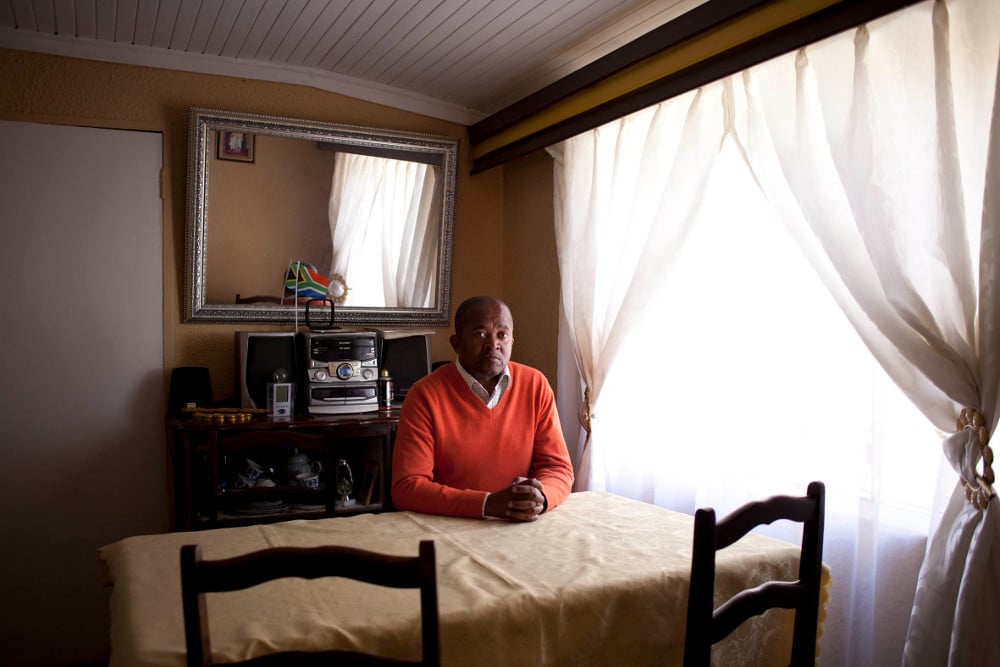
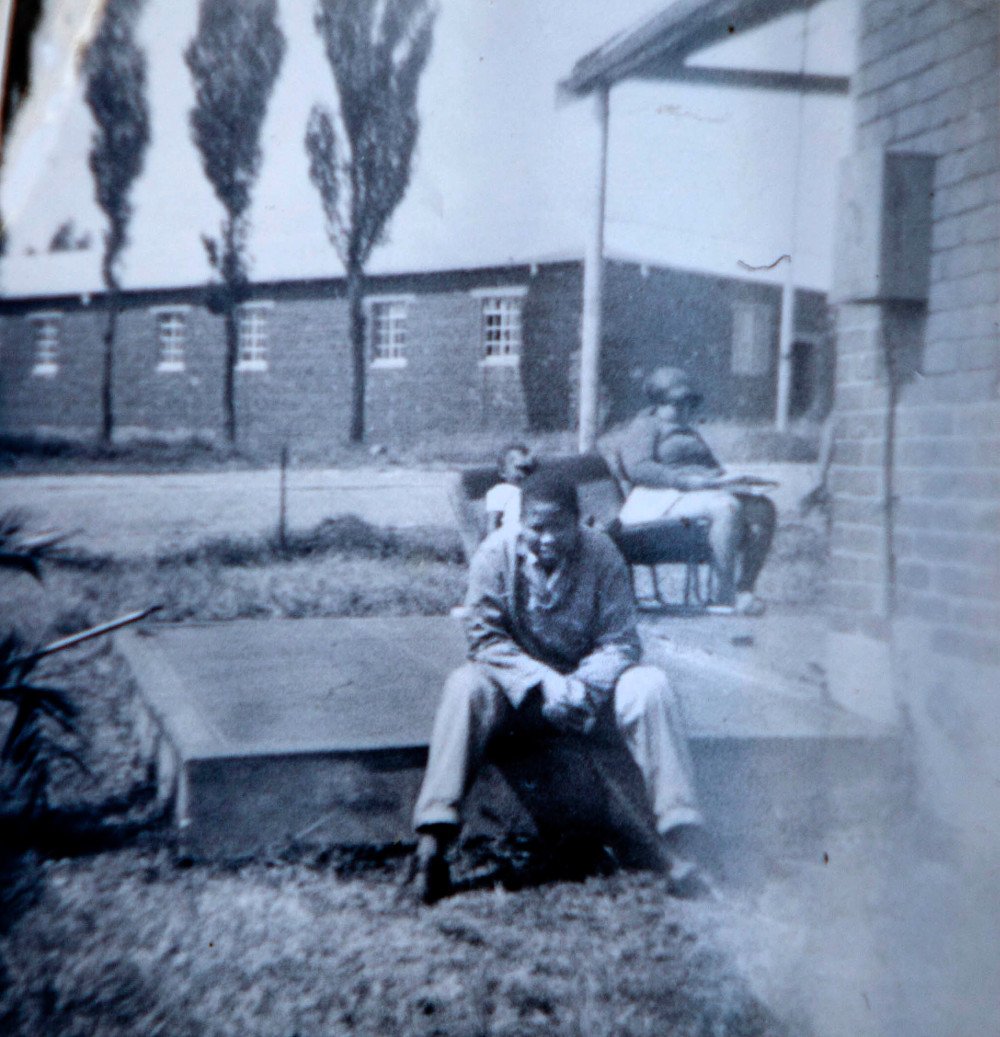
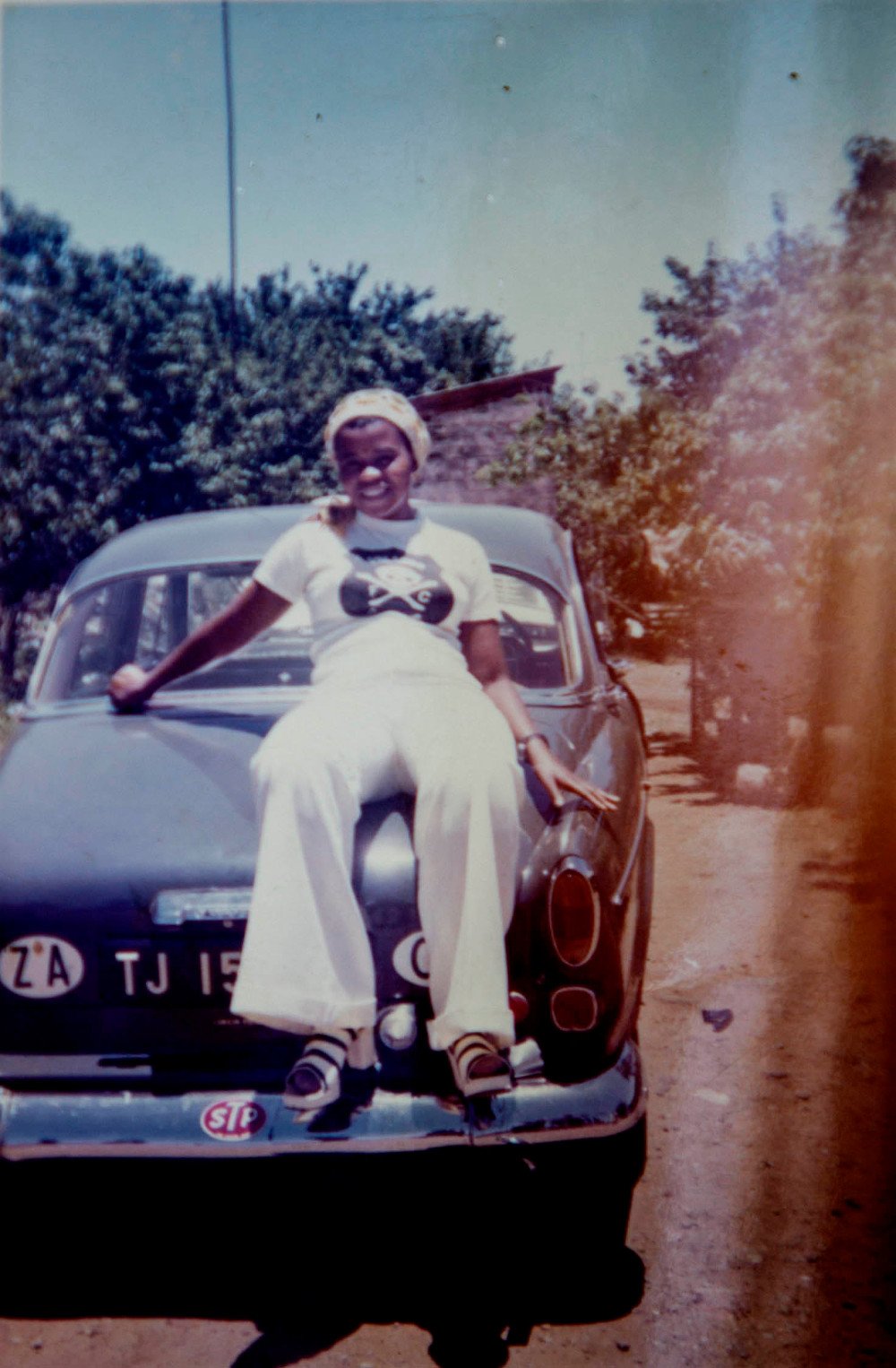
The family of Vuka Tshabalala (top, Oupa Nkosi, M&G) has lived at 1 Mooki Street for years. His brother, Ndoda Tshabalala, was politically active. His sister, Thulisile, poses on the family car.
He shows me photographs of children reclining proudly in front of the blue family Colt, a funky car with classic 1970s lines, when the tree was but a sapling. It has grown since into weepy magnificence, although it is now surrounded by a concrete wall that wouldn’t be out of place in Houghton or Sandhurst.
“We have decided to bring the wall down,” admits Tshabalala, with one eye on future business. “We’ll put palisades instead, so you can see inside from the street.”
The house isn’t only significant for when and where it was built, but also for who stayed there or slipped in unnoticed for a clandestine dop and conversation. Steve Biko, accompanied by Jackie Selebi, once visited Vuka’s politically active brother, Ndoda, and James “Sofasonk’?” Mpanza, the community activist and thorn in the authorities’ flesh, once used to swagger through the front door.
“He joked that this was really his house because he was the first citizen of Soweto in the 1940s,” Tshabalala says. “I remember first being told about him by my mother. That must have been around 1972, when I was in grade one at Zithathele Primary, because he died in 1970. That’s when my mother started telling me about his visits.”
Mpanza’s spirit
Mpanza’s spirit is everywhere, a reminder that, in his folksy, slightly chauvinistic way, it was he who ignited the slow fuse of political consciousness in the area long before the established political parties cottoned on to the cravings of the urban poor. He used to live roughly east of 1 Mooki Street, at 957 Pheela Street. Less than a kilometre away, on the other side of the stadium, is the site where Mpanza encouraged protesting women to build temporary shelters for themselves in the early 1940s. They were often subtenants or removed from elsewhere (Mpanza himself was forcibly removed from Bertrams, near present-day Ellis Park, in the 1930s). They built transitory homes and sometimes more permanent structures on ground partially encircled by a meander in the Klip River, eking out a thin life which was raw in winter and baking hot under their corrugated tin roofs in summer.
Caught in the horseshoe bend and looking back at the stadium and railway line, you can still stand where they once lived, feeling the brick and stone foundations under your feet and wondering how hopelessly marginal life must once have been. It is a grubby, empty space, littered with ghosts and heavy with history, all the more filled with pathos for being the proverbial cousin on crutches to the more formal act of chummy reclamation being done on nearby Mooki Street.
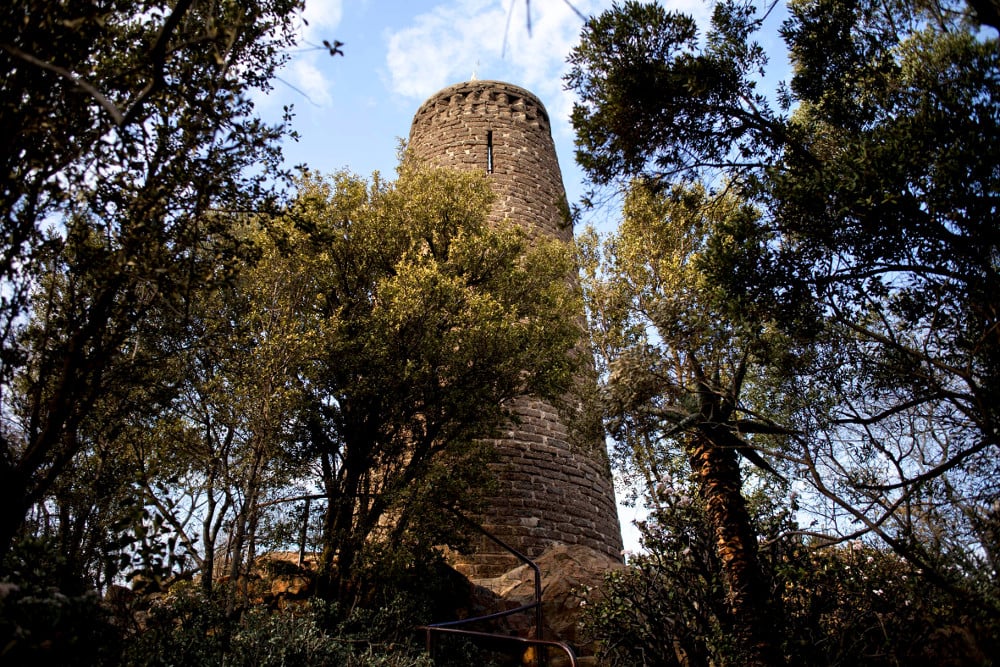
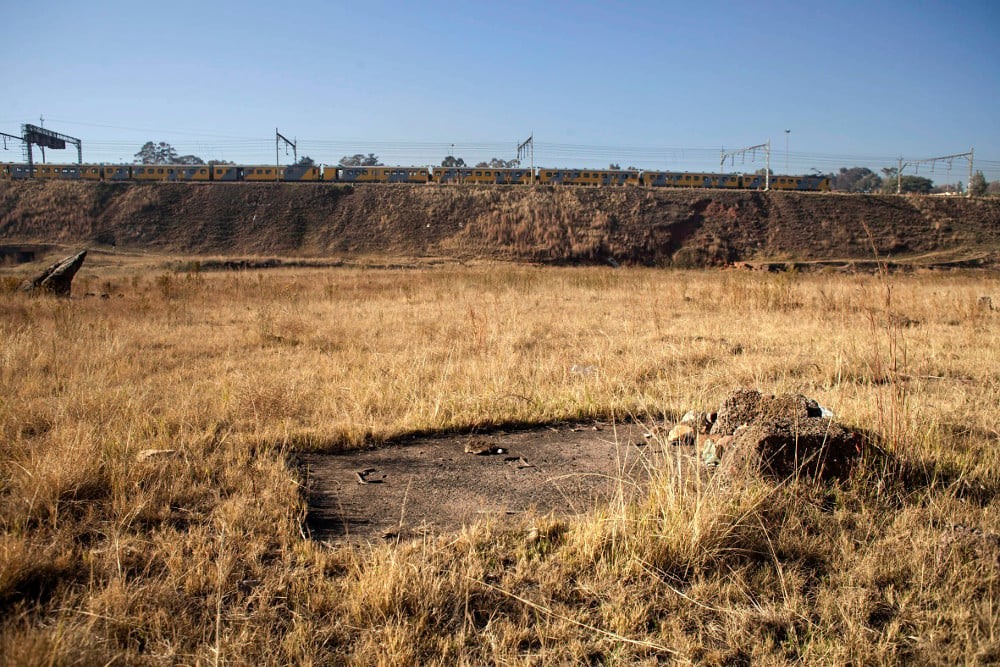
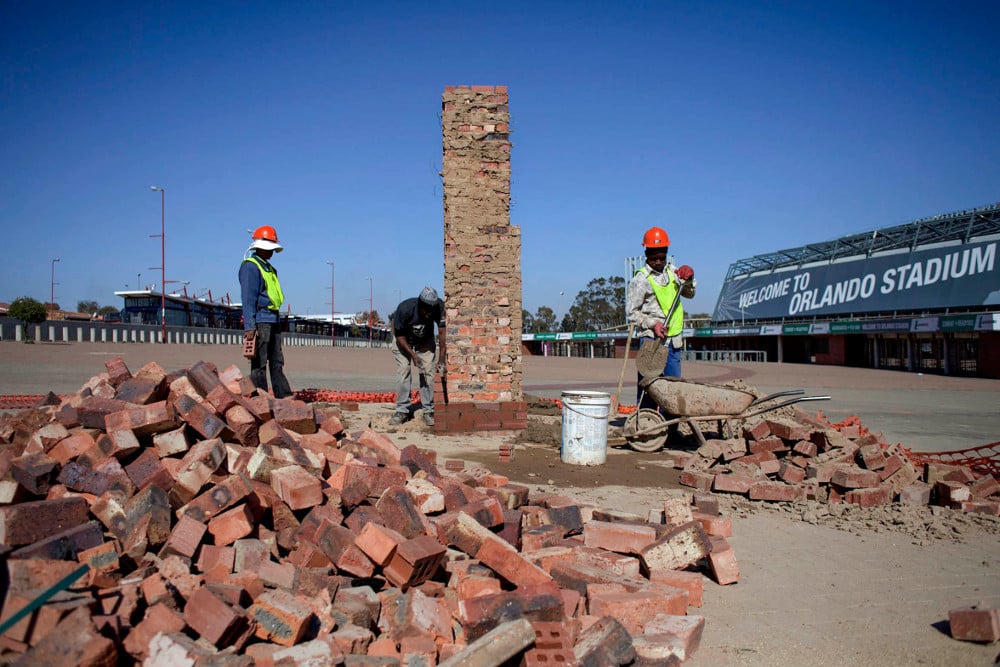
The Oppenheimer Tower in Jabavu, Soweto, was made from the bricks of houses of those who had been forcefully evicted from the land. In the early 1940s, Ndoda Tshabalala encouraged homeless women to occupy a vacant piece of land. Columns will bear plaques for the monuments of Mooki Street. (Photos: Oupa Nkosi, M&G)
Tshabalala believes that, if Soweto has a soul, a spiritual and emotional epicentre, then it lies here in dead land, unrecognised, embarrassing and largely forgotten. When you look at the whitewashed stones in the shape of a cross on the riverbank beside the railway line between the Orlando and Mlamlakunzi stations and try to imagine what once was, you feel he might have a point.
It is not a popular view, given the claims of official history nearby, but Tshabalala’s words have a certain heft, the weight of someone who has lived this all and is slightly suspicious of how it has turned out.
“This is Soweto’s genesis,” he says, hands on hips, strangely animated as he stands in the bleached veld. “These women made a difference. They walked in and took land.”
“Yes, we find it very interesting,” Mokhele adds, “that the story of Mpanza and his Forties squatter movement is sidelined because all this other stuff is taking place close by.”
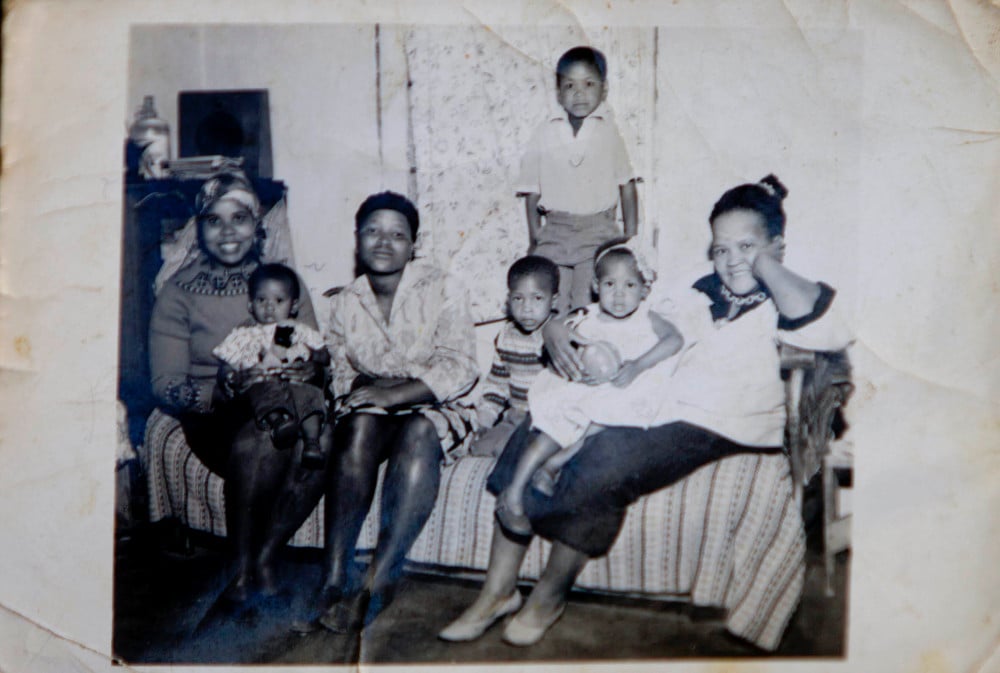
A photo of the Tshabalala family. (Oupa Nkosi, M&G)
When we return to Mooki Street, Tshabalala produces his house deeds in answer to my question about whether he can furnish proof of the houses’ honourable past. It is a single sheet of faded, fire-nibbled paper, which does little to prove provenance one way or another.
In a sense, it doesn’t matter, because Tshabalala and not his house is the true hero of Mooki Street, a walking encyclopaedia of the suburb’s history. He has an almost magical recall, never pausing for breath or hesitation as he rattles off events, names and places. It is an impressive display, ennobling and charming in equal measure.
Should Mooki Street ever need a guide, then Tshabalala is the man for the job.
It was said of Mpanza that, unofficially, he was the suburb’s first mayor. Tshabalala has done one better, for informally he is surely Orlando East’s first citizen.